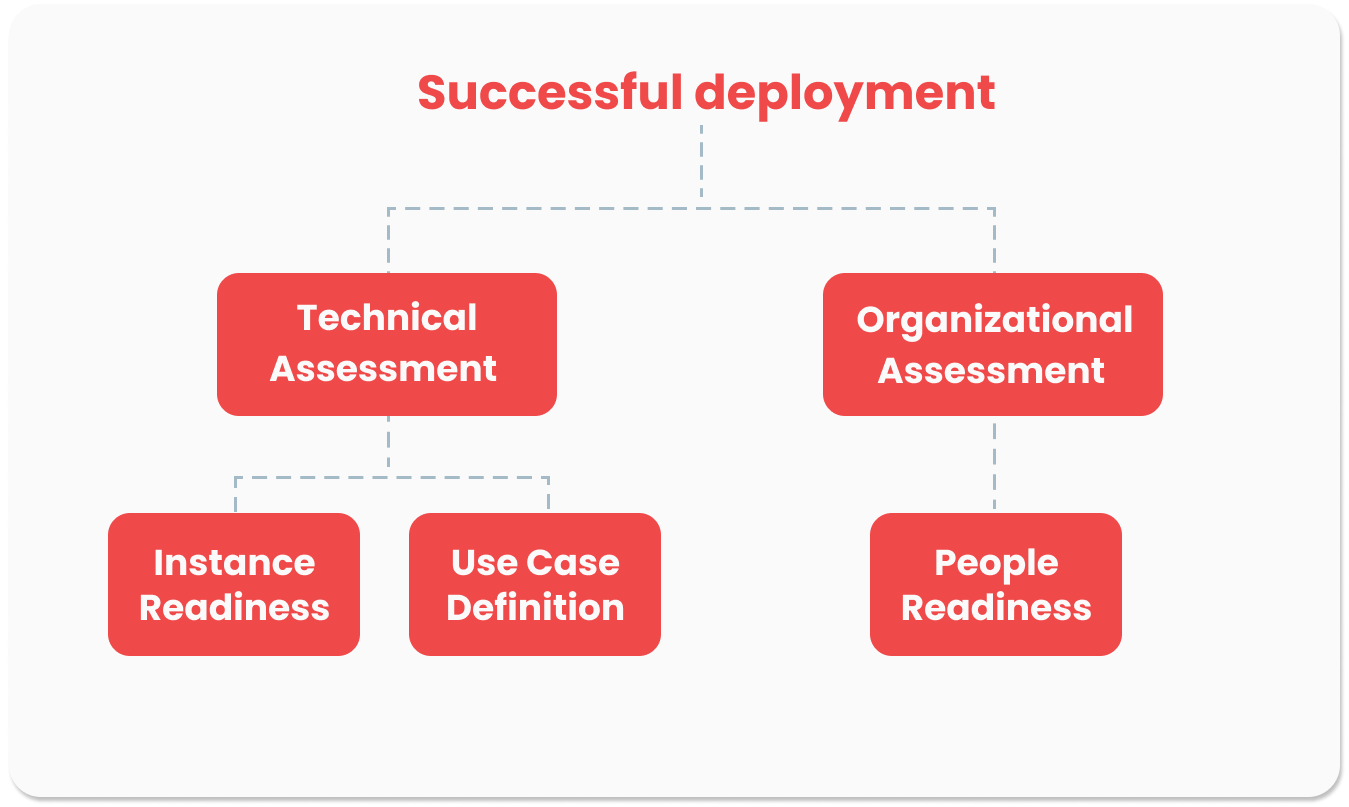Contact person
Maud Stigter
AI Capability Expert
+31 30 760 26 70

Generative AI (GenAI) deployment in an organization requires careful planning, technical readiness, and organizational alignment. Our AI experts Maud and Willem have created a framework with the key prerequisites and strategies for ensuring a successful deployment.
By following these strategies, organizations can ensure they are not only technically prepared for GenAI deployment but also aligned across the organization, setting the stage for a successful & scalable deployment.
Before scaling GenAI across various departments, it’s essential to start with a pilot project. Select a use case with clear, measurable outcomes.
For example, you could begin in a specific department, such as IT, and assess how GenAI improves operations, like knowledge generation or incident summarization. Once you achieve success in this limited scope, you can scale it to other areas of the business.
Once the pilot has shown positive results, there are different approaches to scaling GenAI within the organization:
Expanding to other departments: After success in IT, you can extend GenAI to other areas like manufacturing or customer service, where tasks like document summarization can be highly beneficial.
Broadening the use case: If GenAI is summarizing incidents successfully, consider extending this capability to summarize cases or generate knowledge from demand data.
Enhancing capabilities: Introduce smart automations, enhance prompt and GenAI usage, and regularly update large language models to ensure they continue improving.
To ensure successful deployment, organizations should conduct both technical and organizational assessments:
Instance Readiness: Check if your organization’s systems, such as ServiceNow instances, are equipped to support GenAI functionalities. If not, determine whether external large language models can be integrated.
Use Case Definition: Clearly define the specific use cases GenAI will address.
People Readiness: Does your organization have the right talent to manage and deploy GenAI projects? Identifying a team of GenAI enthusiasts within the organization can foster a more successful deployment.

Even if an organization is not ready for full GenAI deployment immediately, conducting a readiness scan is still advisable. This scan helps identify the areas of the platform that need improvements and lays the groundwork for future deployment. It might also uncover gaps in platform governance or suggest steps to clean up existing systems, ensuring that the organization is prepared when it’s ready to adopt GenAI.
Understanding how employees perceive AI is crucial. During workshops, organizations can assess their team’s attitude towards AI. This involves mapping employee sentiment and asking questions such as, “Is AI something we can fully rely on, or do we see it as a hype that will fade?”
Jumping into GenAI deployment may feel challenging, but you don’t have to move too fast.
Organizations can start small, experiment with GenAI, and skill up over time. This approach allows teams to gradually develop their AI capabilities while ensuring that employees are trained to manage and deploy the new technologies effectively.

Lastly, it’s essential to balance your personal sentiment toward AI with that of your organization.
If you are more optimistic about AI’s potential than the rest of the company, it’s important to take steps to ensure alignment. On the other hand, if you are more cautious and your organization is more open to adopting AI, it’s helpful to reflect on how best to engage with and guide the broader team.
![]()


Sign up to our monthly Flow@Work Exclusive newsletter to get free access to our expertise and lots of tips and tricks to make work flow on the Now® Platform.